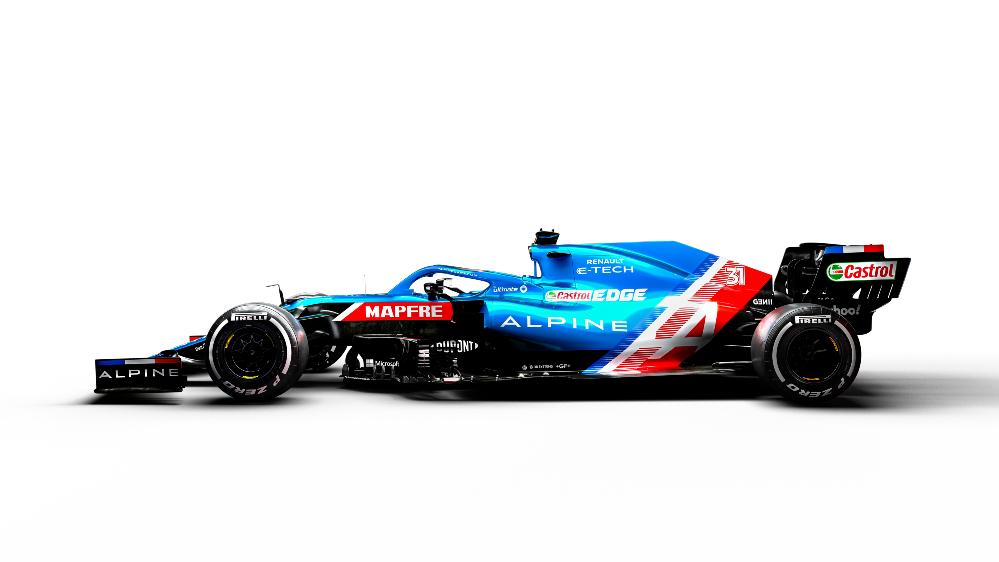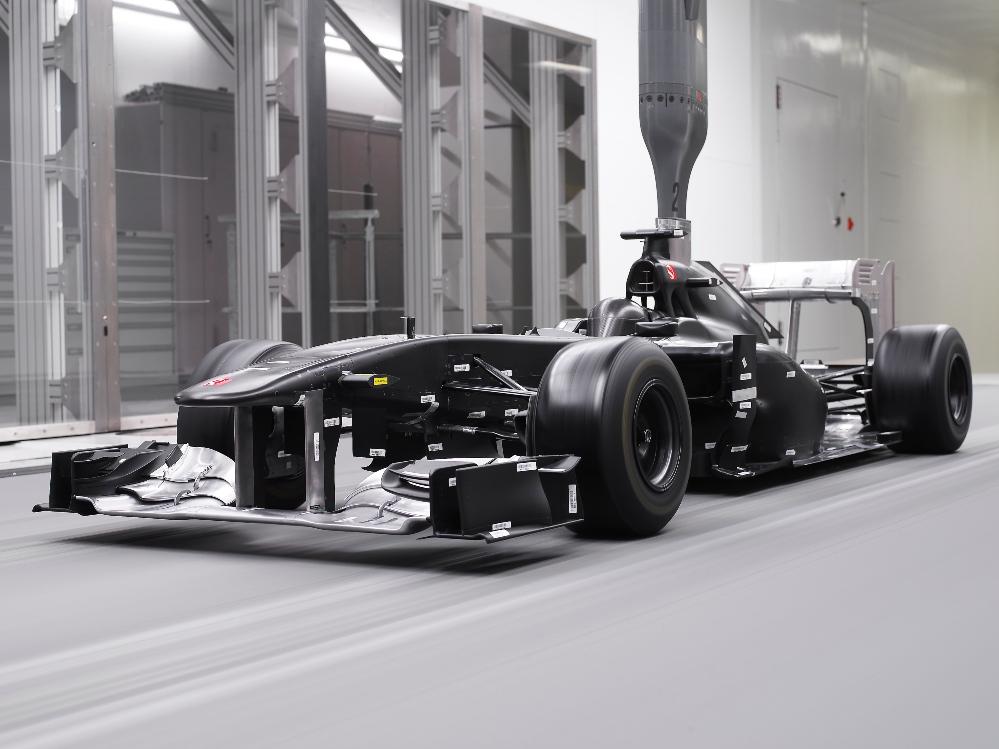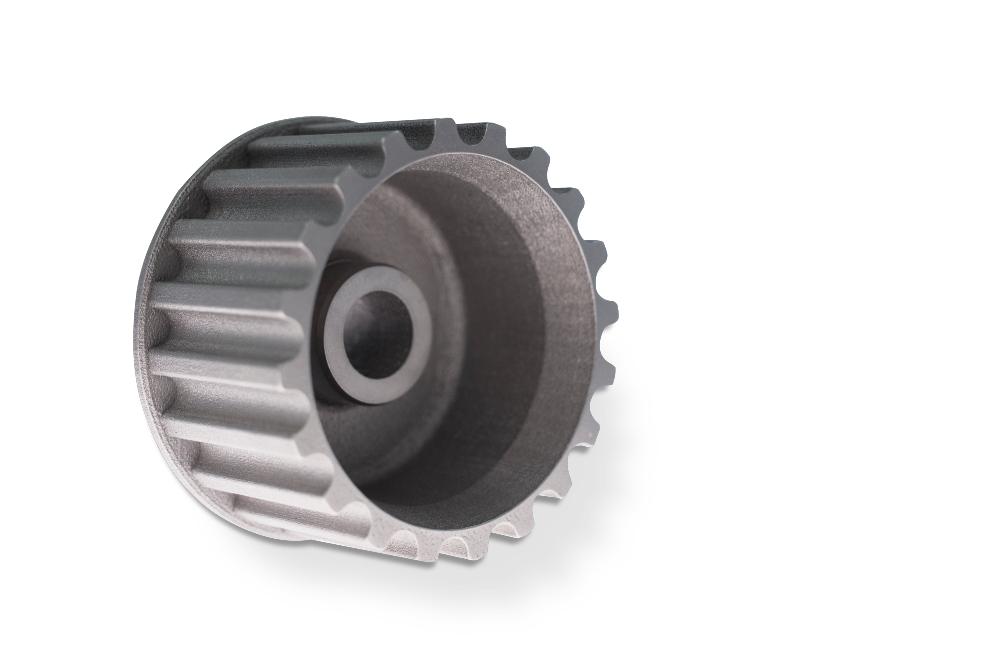Editor-in-Chief
- FMA
- The Fabricator
- FABTECH
- Canadian Metalworking
Our Publications
Categories
- Additive Manufacturing
- Aluminum Welding
- Arc Welding
- Assembly and Joining
- Automation and Robotics
- Bending and Forming
- Consumables
- Cutting and Weld Prep
- Electric Vehicles
- En Español
- Finishing
- Hydroforming
- Laser Cutting
- Laser Welding
- Machining
- Manufacturing Software
- Materials Handling
- Metals/Materials
- Oxyfuel Cutting
- Plasma Cutting
- Power Tools
- Punching and Other Holemaking
- Roll Forming
- Safety
- Sawing
- Shearing
- Shop Management
- Testing and Measuring
- Tube and Pipe Fabrication
- Tube and Pipe Production
- Waterjet Cutting
Industry Directory
Webcasts
Podcasts
FAB 40
Advertise
Subscribe
Account Login
Search
How additive manufacturing improves the designs of racecars
3D Systems’ transportation and motorsports segment leader talks about some of the ways 3D printing is used to improve vehicle performance on the track and road
- By Don Nelson
- June 18, 2021
- Article
- Additive Manufacturing
Additive manufacturing has been part of Formula One racing for most of AM’s history. So it should come as no surprise that 3D Systems—co-founded in 1986 by the inventor of 3D printing, Chuck Hull—has enjoyed a long relationship with the F1 racing circuit.
The Rock Hill, S.C., company’s initial involvement with motorsports dates to the 1990s. One longtime user is the Alpine F1 Team (formerly Renault Sport Formula One). The Enstone, U.K.-based racecar builder has printed parts on 3D Systems machines since 1998. Alpine currently operates six 3D Systems SLA (stereolithography) printers and three SLS (selective laser sintering) machines.
Other F1 users over the years have included, Lotus, Toyota, Benneton, and Sauber Motorsport.
“We’ve got involvement throughout the F1 teams as well as engine manufacturers,” said 3D Systems’ transportation and motorsports segment leader, Kevin Baughey. He joined the company in March 2020 and assumed his current position last July.
Before 3D Systems, Baughey worked at Ford Motor Co. from 1999 to 2008, developing electrical, electronic, and software systems. He followed his time at Ford with stints at software company Dassault Systèmes and PepsiCo.
The Additive Report conducted a telephone interview with Baughey to learn where AM and 3D Systems fit into the highly competitive world of motorsports and the automobile industry as a whole. Following is an excerpt from the interview.
The Additive Report: How did you get involved in the automotive industry and racing?
Kevin Baughey: I grew up in southeast Michigan, and everything about my upbringing was related to automotive and motorsports. At a young age, I was working for local drag-racing teams, helping them out and watching the innovations that they came up with.
Then I went to school, where I studied mechanical engineering, and after graduating immediately went into the automotive industry. I started my career in manufacturing and product design and ultimately got into program management and electrical systems design.
Early in my career at Ford, as a designer of alternator housings, we used 3D Systems stereolithography printers to build housing concepts so that we could rapidly build prototypes and test them. That was invaluable to me. I was carrying those SLA parts back and forth from our prototype shop on a daily basis.
AR: How is 3D Systems involved with Formula One teams? Do you help teams design parts? Print parts? Or do you just sell them machines?
Baughey: It varies. We’ve just sold machines to customers in the past. In some cases, we’ve got deep involvement, where our applications engineers spend time with teams developing applications and helping to refine applications.
AR: In terms of motorsports, is 3D Systems just in Formula One? Or are you involved with other racing circuits, like NASCAR?
Baughey: 3D Systems’ motorsports experience crosses a variety of racing circuits, and NASCAR is an important one.
For these teams, reverse engineering is important to create a 3D representation of a car’s exterior body for CFD [computational fluid dynamics] analysis. Another popular application is reverse-engineering engine blocks to create 3D models for analysis for endurance racing, like the Le Mans series. No matter the application, the expertise of our applications engineers is key to ensuring the design is optimized.
AR: Is the goal of reverse engineering to design a better existing part?
Baughey: Yes, design optimization is a very important benefit of additive manufacturing. Some of the trial and error that occurs is happening in the shop, where they’re working through problems and making part iterations.
Eventually, you need to fold an iteration back into the engineering and design space to leverage things like additive manufacturing. Solutions like reverse engineering allow you to quickly take what was done out on the shop floor or on the track and fold it back into a virtual definition that you can then further refine with CFD analysis.
AR: Can you give an example of a part you’ve been involved with that was reverse-engineered?
Baughey: If we stick with NASCAR, we can look at how BMI [a company that specializes in aerodynamics] used our software to scan all the body panels of a vehicle. Then they did a CFD analysis to determine where they could improve the surfaces.
AR: Racing teams use 3D Systems’ plastic and metal printers. Is metal use growing in motorsports like it is in other areas of manufacturing?
Baughey: Metal is really gaining prevalence now. People have come to understand what it can be used for.
AR: What do race teams use metal printers to build?
Baughey: It’s very similar to the plastic side. You can print direct parts, but you can also create jigs and fixtures and tools.
We have three main application areas we divide our metal printers into. One is durable tooling, which would be jigs, fixtures, injection mold tooling, and so on. Then we’ve got two direct-product applications that really differentiate themselves based on the science of the system. One is energy and fluid management, which focuses on applications where the primary focus is either heat transfer or fluid dynamics. The third area is metal structural, which is really about managing dynamic or static forces and energy.
AR: Among the reasons that automakers sponsor race teams is to help them research and develop technologies that can be adopted for use in their consumer vehicles. One challenge AM faces is it doesn’t scale to the point where you can make millions of parts for use on an assembly line. Given that, how is 3D printing currently used in automobile production?
Baughey: One area is jigs, fixtures, tooling, robot grippers—things that support manufacturing. It obviously helps with inventory management and being able to tailor parts for industrial manufacturing.
And, like you said, if you think about the consumer auto industry, you think of millions of parts. But when you really look at vehicles product line by product line, a lot of the products are segmented such that you’ve got unique components or systems that are at lower volume. In other words, not every vehicle is an F-150 pickup or a model where you’re cranking out 700,000 units a year. Even in product lines where there are high volumes, there are often optional systems, components, and special series that involve much smaller volumes but provide very-high value.
There are a lot of unique components that need to be made for short-run vehicles and mass-customized vehicles. And then there are the ultraluxury and hyper-performance markets. These companies are very specialized and focused on high value while building in lower volumes.
Additive manufacturing can address a broad range of applications for these markets, from under-hood applications to body interior systems to the exterior body.
Another aspect is that engineers on the consumer side, just like the motorsports side, need to iterate. The more the better.
The fundamental architecture of vehicles is changing, from both the propulsion side and the passenger-experience side. Look at the interior cabin. When I started out in my career, the cabin was so constrained. The architecture was really well-known. The hard points were really well-known. We obviously did things to innovate, but compared to today, the changes were relatively incremental.
Today, a lot of that architecture is on the table, and engineers are asking, “How can I create versions of a part and physically see how they’re going to behave in the vehicle? Even if I end up traditionally manufacturing a million units, I want to iterate quickly.” Additive manufacturing lets them do that.
About the Author

Don Nelson
2135 Point Blvd.
Elgin, IL 60123
(815)-227-8248
About the Publication
- Podcasting
- Podcast:
- The Fabricator Podcast
- Published:
- 04/16/2024
- Running Time:
- 63:29
In this episode of The Fabricator Podcast, Caleb Chamberlain, co-founder and CEO of OSH Cut, discusses his company’s...
- Trending Articles
- Industry Events
16th Annual Safety Conference
- April 30 - May 1, 2024
- Elgin,
Pipe and Tube Conference
- May 21 - 22, 2024
- Omaha, NE
World-Class Roll Forming Workshop
- June 5 - 6, 2024
- Louisville, KY
Advanced Laser Application Workshop
- June 25 - 27, 2024
- Novi, MI































